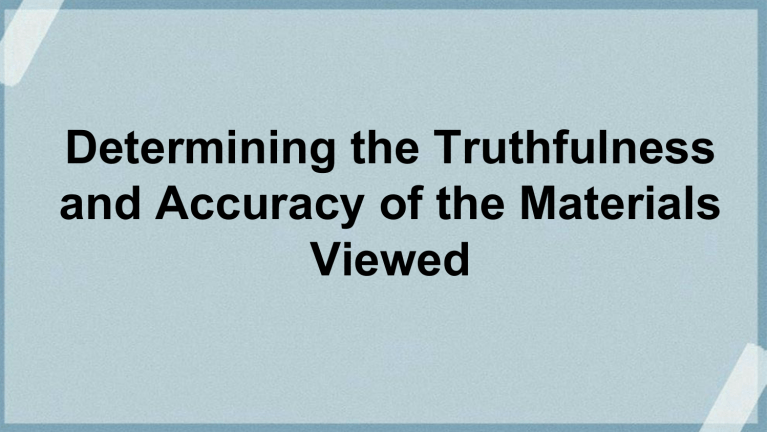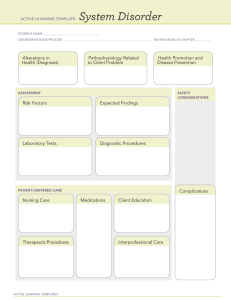Determining the Truthfulness and Accuracy of the Materials Viewed
advertisement

Determining the Truthfulness and Accuracy of the Materials Viewed Let’s do this! Tell whether the following platforms give fact or opinionated information. Determining the Truthfulness and Accuracy of the Materials Viewed WHAT IS VIEWING? Viewing is “an active process of attending and comprehending visual media such as television, advertising images, films, diagrams, symbols, photographs, videos, dramas, drawings, sculptures and paintings. What is Truth? Truth is the quality of being honest and not containing or telling any lie. What is Accuracy? Accuracy is the fact of being exact or correct. Information Disorder The phrase “information disorder” was coined by Wardle (2017), First Draft US director and co-founder. Wardle (2017) argues that the phrase “fake news” is inadequate to describe the complexity of deception. 7 Types of Information Disorder 1.Satire/ Parody These types of viewable texts have no intention to cause harm but has potential to fool. Content purporting to be satire will evade the factcheckers, and frequently over time, the original context gets lost: people share and re-share not realizing the content is satire and believing that it is true. 2. Misleading Content Some common examples of this technique are selection of a partial segment from a quote, creating statistics that support a particular claim but don’t take into account how the data set was created, or cropping a photo to frame an event in a particular way. 3. Imposter Content This is when genuine sources are impersonated. An example of this is when the logo of a well-known brand or name is used alongside false content. The goal of this deception is to increase the chance that people will trust the content without checking the content. 4. Fabricated Content The new content is 100% false. These texts are designed to deceive and to harm. New fake social media accounts are created to spread new and invented content from it. 5. False Connection This is when headlines, visuals, or captions don’t support the content. This technique makes claims about content via a sensational headline, only to find the headline is horribly disconnected from the actual article or piece of content. 6. False Context This is when genuine content is shared with false contextual information. It often happens during a breaking news event when old imagery is re-shared, but it also happens when old news articles are reshared as new, when the headline still potentially fits with contemporary events. 7. Manipulated Content This is when genuine information or imagery is manipulated to deceive. The genuine content is tampered with or doctored in some way. EXERCISE Directions: Identify the type/s of information disorder depicted in the pictures. PICTURE 1 Describe the picture: ______________________________________________ Types of Information Disorder: ____________________________________________


